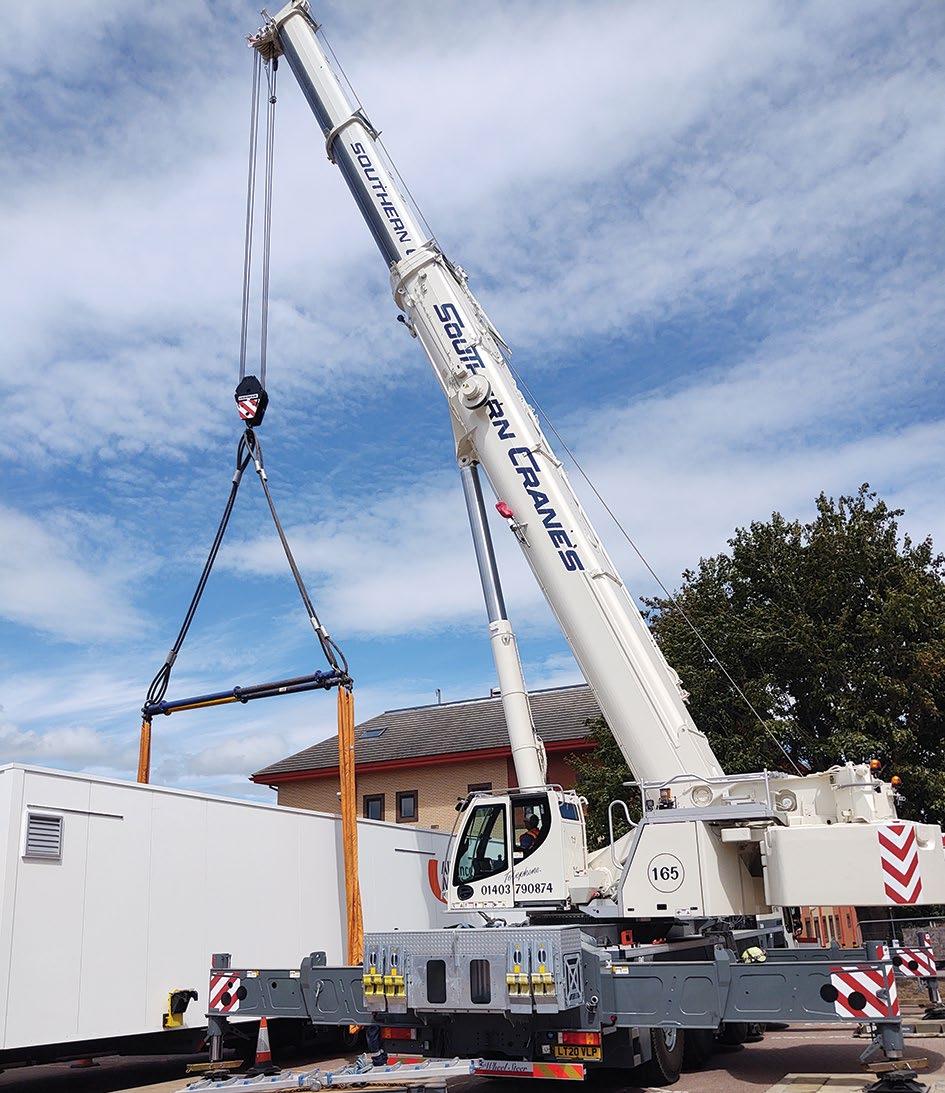
3 minute read
Remote logging
Working in the timber handling and transportation industry is often physically demanding, hazardous and in many countries requires operators to work all day in harsh weather conditions. It is also a highly competitive market with increasingly stringent legislation leading to shrinking margins. Unsurprisingly, finding skilled drivers/operators that want to work in the sector can be a real challenge.
A few years ago loader crane manufacturer Hiab set out to help improve the driver’s lot with its HiVision remote control system. By combining four cameras with a virtual reality headset, HiVision allows operators to load/ unload timber from the comfort and safety of the truck cab. The headsets provide a field of vision of up to 270 degrees - 30 degrees more than Hiab claims is usually required from a rear mounted crane cab – and features two joysticks mounted on the seat armrests within the cab. The company also claims the system reduces the physical demands and exposure to bad weather than traditional forestry cranes, making the industry more accessible.

Hiab’s HiVision system allows operators to control its Loglift cranes from inside the truck cab
World’s coolest Grandma?
This certainly proved the case when new grandmother Åsa Norling of family run timber transport company Lars Norlings Åkeri came out of retirement in order carry on the family business while her son and daughter in law cared for their new baby girl. But it only became a practical reality thanks to the HiVision remote control system.

Lars Norlings Åkeri has provided its services throughout Sweden for more than 80 years
Established in 1937 by brothers Otto and Holger Norling, the company has provided timber and gravel transportation throughout Sweden for more than 80 years. The company purchased its first hydraulic timber crane - a Hiab Elephant 176 - in 1963 and more recently purchased a Hiab Loglift 118S HiVision. Third generation manager Emil Norling said: “When we first thought about buying a HiVision crane, we weren’t really planning to invest right away. But from a safety and work environment perspective, it felt like the right thing to do.”

Fortunately for Emil, the system also meant that his mother was able to come back to work operating the timber trucks while he took some paternity leave. For Åsa it was a case of déjà vu having begun operating the trucks and their cranes in 1995 after her husband Lars Norling was seriously injured in a car accident. She took over the running of the business while he recuperated. Although Åsa is officially retired and a grandmother she is enjoying driving the trucks and operating cranes again, especially as she can do it from the comfort of modern truck cab.
Next generation
Emil Norlings Åkeri believes the introduction of HiVision has the ability to attract the younger generation to the timber transport industry going forward and maybe, who knows, even his new daughter?
Recently Hiab supplied the Savo Vocational College in Finland with a Hiab Loglift timber crane with HiVision control system. According to college tutor Ville Remes, the system is already helping transform what is traditionally a male dominated sector. He says: “Some of the students have chosen to study at the college due to the selection of state of the art technological tools we have here, which can make operating a crane resemble a computer game. This has proved to be a huge draw with the younger generation as they are able to relate to the industry more easily.”

In another example, Sofie Tjus Ekström, a timber truck operator from Kjell & Aste Åkeri in Sweden - who trained with a number of other female operators - said: “It has nothing to do with how strong you are, technology makes it accessible for everyone. Now it is no longer necessary to climb over slippery, icy logs in the winter or take the risk of being near heavy traffic when operating next to a major road. Everything can be operated from inside the truck cab.”
As well as looking to introduce this technology to other products in its range Hiab hopes to develop a solution that enables operators to operate equipment remotely from greater distances, without ever needing to get in the truck at all. With self-drive trucks on the horizon this may be more likely than it might sound.









